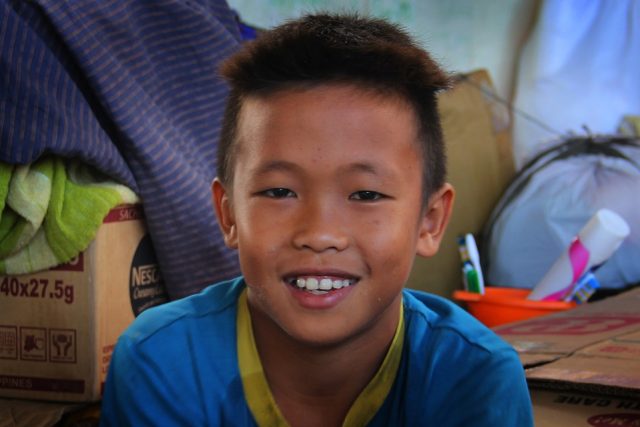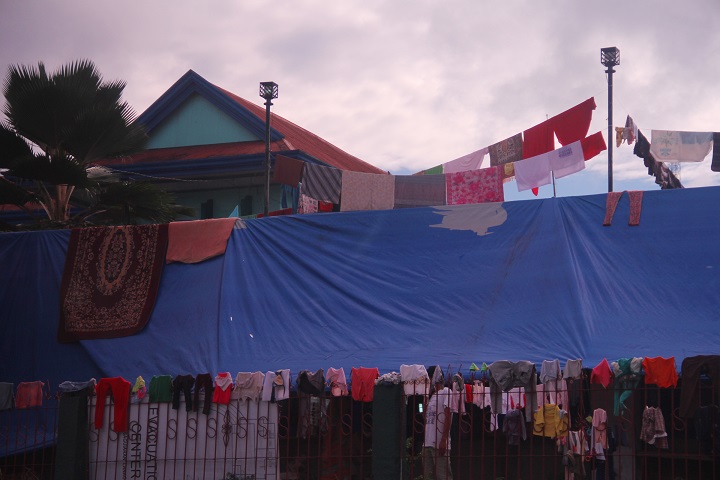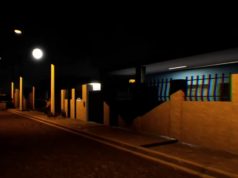
This story was contributed by the Bureau of Public Information of the Autonomous Region in Muslim Mindanao. We have edited it for style.
MARAWI CITY — “Dati, hindi ko po alam ano ba talaga gusto ko paglaki ko. Pero dahil sa nangyari ngayon, gustung-gusto ko na maging engineer. Gusto ko makapagpatayo ng mga bahay (Before, I really did not know what I wanted to be when I grow up. But because of what has happened, now I really want to become an engineer. I want to build homes).”
Jamar Datu Maas, 11, says this as he looks around at the scores of displaced families in an evacuation camp in Saguairan town, a few kilometers from their home, Marawi City, large swathes of which have been pounded into rubble by the continuing fighting, punctuated by air and artillery strikes, between government forces and extremist gunmen that has gone on for more than four weeks now with no certainty when it will end.

The eldest of three children of a young single mother who raised them with what she earned selling vegetables in their lakeside village of Caloocan, Jamar says their life before May 23 was simple but they were happy.
Recalling the Tuesday afternoon that forever changed his life, he said: “Naglalaro kami ng mga kaibigan ko tapos may nakita kami na limang ISIS (Islamic State of Iraq and Syria, to which the fighters from the Maute and Abu Sayyaf groups have sworn allegiance and which government has taken to calling them as well) na dumaan, natakot kami at tumakbo kasi baka barilin kami (We friends were playing then we saw five ISIS pass, we were scared and ran because they might shoot us).”
Jamar and his family would make the 11-kilometer trek to safety on foot with the few belongings they managed to bring with them as the battle began to intensify.
“Simula bahay namin, tumakbo, naglakad lang kami papalayo kasi wala kami sasakyan, hanggang sa naabot kami dito sa Saguiaran (From our house, we ran then walked away because we have no vehicle, until we reached Saguiaran),” he said.
Their village, Caloocan, is one of four villages still controlled by the extremists.
More than 240 families, including Jamar’s family, are crowded into a 900 square-meter covered court with limited sanitation and, save for the roof, little protection from the elements.
The government of the Autonomous Region in Muslim Mindanao has promised to start building additional toilets, washing and bathing facilities in the camp within the week.

Yet the harsh conditions in the camp have not dampened the spirit of Jamar and children like him whose education has now been put on hold.
“Sana matapos na itong gulo, gustung-gusto ko na mag-aral (I wish the fighting ends, I really want to go back to school),” he said. “Gusto ko matulungan ang Nanay ko kasi kawawa lang siya, siya ang bumubuhay sa amin. Pero paano ko siya matutulungan, magulo sa lugar namin, nabombahan na bahay namin (I want to help my mother because she is the only one supporting us. But how can I help her when there is fighting in our place, our home has been bombed)?”
Most of the houses in Caloocan, which is within the Marinaut district that has been the target of intense air strikes, are believed to have been destroyed.
It is the thought of this that has sparked the fifth grader’s dream for the future.
“‘Pag naging engineer na ako, gagawa ako ng bahay para sa lahat ng mga tao dito sa evacuation center,” he says beaming. “Libre na ‘yun (It will be free).”









